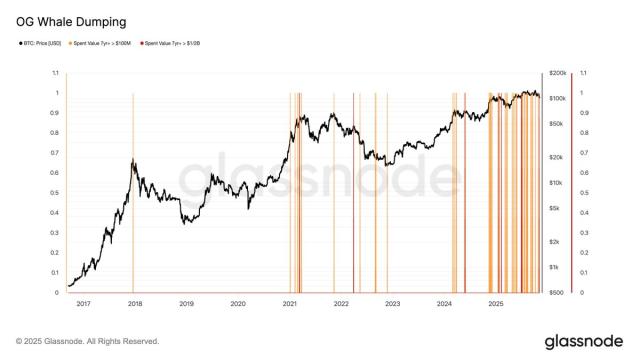Recently, JPMorgan Chase, a globally renowned investment bank, announced plans to accept Bitcoin and Ethereum held by institutional clients worldwide as collateral for loans. This news has once again been seen by the crypto industry as an important indicator of institutional acceptance.
Author: Luo Luo
Edited by: Wen Dao
Recently, JPMorgan Chase, a globally renowned investment bank, announced plans to accept Bitcoin and Ethereum held by institutional clients worldwide as collateral for loans. This news has once again been seen by the crypto industry as an important indicator of institutional acceptance.
In fact, institutional investors were a major driving force behind Bitcoin's leading gains in the crypto asset market in the first half of the year. With ETH, SOL, and BNB being included in the asset reserves of some listed companies and even used as treasury assets by multiple companies, the institutional market has once again demonstrated strong growth potential.
According to the "2025 Institutional Investor Digital Asset Survey Report" jointly released by EY and Coinbase, institutional investors with influence in asset allocation decisions, including asset management companies, hedge funds, private banks, venture capital funds, and family offices, have shown strong interest in crypto assets. The report indicates that 86% of the surveyed institutional investors already hold exposure to digital assets and plan to further increase their allocation after 2025.
The entry of institutional investors is closely related to the progress of regulatory compliance for crypto assets in multiple jurisdictions. At the same time, top global crypto asset exchanges such as Coinbase and Binance are also increasing and optimizing investment tools for institutional clients in order to gain a foothold in the "institutional bull market".
Institutional demand for crypto asset investment surges
“Institutional demand drove record growth.” In October 2025, CME Group disclosed in its third-quarter crypto asset market insights report that its crypto asset futures and options trading volume exceeded $900 billion, setting a new record.
In the second half of this year, Binance, a globally renowned cryptocurrency trading platform, has accelerated the launch of several services for institutional clients.
In July of this year, Binance launched its institutional lending business, providing institutional clients with cross-collateralization capabilities across spot, cross margin leverage, and unified accounts. Following this, Binance announced that its Binance third-party custody service, designed for compliant institutions, would waive fees on pledged assets by the end of the year.
Starting September 30, Binance's Crypto-as-a-Service (CaaS) solution for institutions will be open to early access from established licensed banks, brokerages, and trading platforms.
Binance's series of actions quickly responded to the current surge in institutional demand for crypto asset allocation.
The "2025 Institutional Investor Digital Asset Survey Report" shows that 59% of institutional respondents plan to allocate more than 5% of their assets under management to crypto assets. Institutional allocation is not limited to holding mainstream crypto assets such as Bitcoin (BTC), Ethereum (ETH), Ripple (XRP), and Solana (SOL), but also involves in-depth DeFi scenarios such as staking, lending, and derivatives. 57% of respondents also included tokenized assets in their "planned allocation" to achieve portfolio diversification.

Currently, traditional asset management companies and hedge funds are the most mainstream institutional clients with the largest amount of funds.
According to public information, hedge funds such as Bridgewater and Renaissance Technologies have incorporated crypto assets into their global macro strategies to hedge against fiat currency depreciation or to include them in investments in emerging asset classes; multi-strategy hedge funds such as Millennium Management may trade crypto assets to gain early returns.
Meanwhile, investment banks and asset management firms such as Goldman Sachs and JPMorgan Chase have begun offering crypto asset derivatives, such as futures, options, and swaps, to institutional clients and executing large-scale transactions on exchanges on behalf of their clients; BNY Mellon and State Street have entered the digital asset custody services market.
As described by Catherine Chen, Head of Institutional Business at BinanceVIP, “The demand for digital assets is growing faster than ever before, and traditional financial institutions can no longer stand idly by. However, building a crypto asset service system from scratch is complex, expensive, and risky. Therefore, we created ‘Crypto Assets as a Service’—a trusted, ready-to-use infrastructure solution for institutions.”
Back in May 2018, the US-based cryptocurrency exchange Coinbase launched products targeting institutional investors, claiming that "more than 100 hedge funds have announced plans to trade and invest in crypto assets," indicating that institutional clients' interest in digital assets had been growing for seven years. Coinbase also launched its institutional-grade custody service platform at that time and added more products tailored to institutional clients in the following years.
There is no doubt that top cryptocurrency trading platforms such as Coinbase and Binance have become important bridges between traditional finance and new digital asset finance.
For trading platforms at the top of the crypto asset industry chain, gaining widespread recognition from institutional clients not only means a large custody scale and trading volume, but more importantly, it proves that emerging finance supported by blockchain can be widely adopted.
How does Binance build institutional trust?
To gain favor with asset management companies, hedge funds, and banks, exchanges must meet the needs of these institutions.
The "2025 Institutional Investor Digital Asset Survey Report" shows that the top three reasons why institutions are willing to allocate crypto/digital assets are "higher returns than other asset classes" (59%), "investing in innovative technologies" (49%), and "hedging against inflation" (41%). The main concerns include regulatory uncertainty (52%), volatility (47%), and asset custody security (33%).
This shows that compliance and security remain the most important factors for institutions entering the crypto asset market, and are also the primary trust issues that crypto asset trading platforms must address when accepting institutional clients.
In the global custody market, which is estimated to be worth $3.28 billion, not all platforms can provide true institutional-grade security and clear regulatory support, making licensed and compliant institutional-grade custody services crucial.
Currently, top custodians such as Anchorage Digital, Bank of New York Mellon, and Sygnum Bank possess strong regulatory protections, including OCC, NYDFS, and FINMA licenses, as well as comprehensive audits issued by globally renowned accounting firms. This makes them the preferred custodians for hedge funds, mainstream brokers, liquidity providers, and Fintech companies.
When building its institutional client service system, Binance prioritized addressing compliance and security needs. Back in December 2023, Binance launched the cryptocurrency exchange industry's first tripartite banking partnership model, allowing investors to deposit their trading collateral off-exchange while continuing to trade seamlessly on the Binance platform. Sygnum Bank is one of Binance's tripartite banking partners. This digital banking group holds a Swiss banking license and also possesses CMS and major payment institution licenses in Singapore, partnering with Binance to provide custody and trading services to institutional clients such as hedge funds and brokers.
Binance began supporting tokenized reality assets (RWAs) in July, such as USCY and cUSDO, allowing institutional clients to hold these yield-generating tokenized assets through third-party banking partners, in addition to holding traditional collateral such as fiat currency and government bonds.
In August of this year, according to the Financial Times, Spanish bank BBVA also reached a tripartite banking agreement with Binance, allowing customers to store their digital assets in accounts outside of cryptocurrency exchanges, increasing their asset custody options. Under the new structure, BBVA will hold customer funds in the form of US Treasury bonds, while Binance will accept these bonds as collateral for transactions.
This architecture follows the long-standing model used in traditional financial markets, significantly reducing counterparty risk. By separating custody and execution, institutions can better coordinate crypto asset management with internal risk control and external compliance requirements, without sharing assets or losing control.
While building trust through security, Binance has also developed a full range of products to meet the trading needs of VIPs and institutions, including block trading services, derivatives, institutional lending, and more.
In September of this year, Binance launched the "Crypto-As-A-Service" (CaaS) solution, attempting to capture more traditional institutional customers from the experience level.

Binance CaaS solution is designed for large, regulated financial institutions planning to enter the crypto asset market on a large scale. It seamlessly integrates multiple functions such as trading, liquidity access, custody, compliance and settlement into the institution's own platform system, thereby eliminating the high cost and technical burden of developing complex infrastructure from scratch.
Compared to other service providers in the industry, Binance CaaS’s core innovation lies in its combination of Binance’s global order book access capabilities with an institution’s internal liquidity, enabling institutions to directly match orders between their own clients in a “best price match” manner.
This efficient use of internal liquidity not only significantly improves trading efficiency and reduces costs, but more importantly, due to its deep integration with Binance's underlying infrastructure, even institutions with limited internal order sizes can directly access Binance's global spot and futures markets, thereby achieving a consistent execution experience and tight spread performance.
Public data shows that, to date, Binance's institutional client registrations have increased by 97% year-on-year, with daily trading volume reaching $88 billion. Binance's emphasis on institutional clients is not only driven by market share considerations but also closely related to its long-term strategic goal of promoting "financial inclusion."
Binance CEO Richard Teng stated that in addition to a robust regulatory and compliance system, institutional adoption is becoming a key driver for the widespread adoption of crypto assets. "Think about forex, commodities, stocks, and bonds; it's always institutional adoption first, then corporations, high-net-worth individuals, and finally retail investors."
He pointed out that since last year, the industry has undergone a dramatic transformation—the US first approved crypto asset ETFs, followed by approvals worldwide. "Ultimately, it gave crypto assets the credibility they deserved, and we've seen a dramatic increase in adoption. Fidelity, BlackRock, Charles Schwab, and even JPMorgan Chase have gone from crypto skeptics to believers and are now offering crypto products. So, an institutional wave is coming."
Disclaimer: As a blockchain information platform, the articles published on this site represent only the personal views of the authors and guests and do not reflect the position of Web3Caff. The information contained in the articles is for reference only and does not constitute any investment advice or offer. Please comply with the relevant laws and regulations of your country or region.
Welcome to the official Web3Caff community : Twitter account | Web3Caff Research Twitter account | WeChat reader group | WeChat official account








